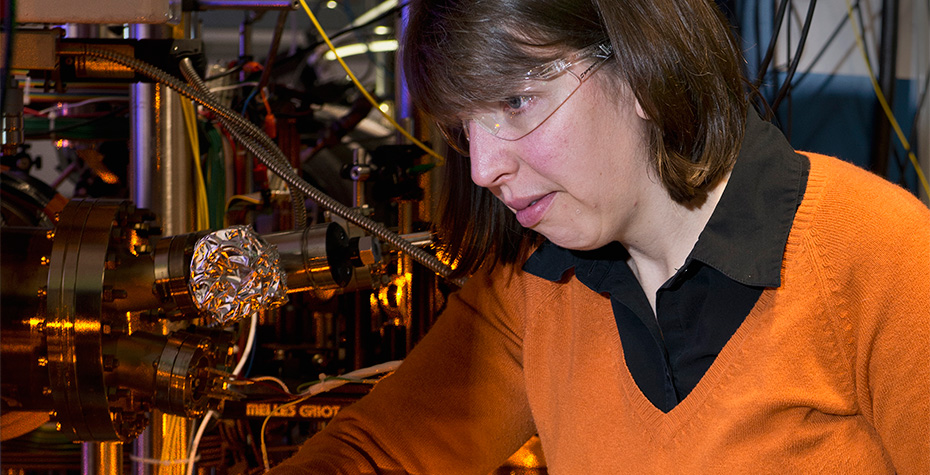Wellesley Alum Wins Maria Goeppert Mayer Award

Gretchen Campbell ’01 recently celebrated two milestones: the birth of her first child and her selection as the recipient of the 2015 Maria Goeppert Mayer Award for outstanding achievement by a woman physicist in the early years of her career.
Campbell, an atomic, molecular, and optical physicist, has developed a ring-shaped condensate to better understand superfluidity and superconductivity in Bose-Einstein condensates (BECs). The award recognizes her pioneering work—and it highlights the value of her Wellesley experience. “I’m not sure I would have become a physicist had I gone to a different college or university,” she says.
When Campbell enrolled at Wellesley, she planned to become a veterinarian—until she took a “dynamic and engaging” first-year physics class taught by Glenn Stark, professor of physics. She loved the reasoning and the challenges presented in class. She also appreciated the encouragement she received from professor of physics Theodore W. Ducas, her lab instructor, who soon became her mentor. “If I had gone to a large university, it’s very likely I would have gotten lost in a large lecture class,” she says. “Women’s colleges are incredibly important for women who may want to pursue a career in science.”
“What we in the Physics Department aim to do is to engage our students in the excitement of the physics enterprise,” says Ducas. “This starts with our introductory courses and builds throughout the four years. Gretchen was an exemplary student in this process, and it gives us a great deal of pleasure to see what she has achieved since leaving Wellesley. We like to think we helped lay the foundation for those accomplishments.”
Campbell agrees that Wellesley gave her a solid foundation to start her career in physics. “I was well prepared to move onto a graduate program and research group where only 10 percent to 15 percent of my incoming class was female,” she says.
Campbell earned her Ph.D. at MIT in 2007, where she did her first work in BECs in optical lattices, and then was a National Research Council postdoctoral fellow at JILA (a joint physics institute of the University of Colorado at Boulder and the National Institute of Standards and Technology), in Boulder, Colo. In 2009, she became a fellow at the Joint Quantum Institute (a collaboration between NIST and the University of Maryland), where she has studied sodium BEC rings, essentially superfluid “atom circuits” that behave like a superconductor.
Winning the Maria Goeppert Mayer Award, named after a German-American physicist who was the second woman to win a Nobel Prize in physics, came as a wonderful surprise, she says. “It’s a great honor to win an award that has been previously won by such a distinguished group of physicists,” she says. (That group includes two other Wellesley alums.)
As part of the award, Campbell will receive a $2,500 stipend plus a $4,000 travel allowance to allow her to give lectures at up to four universities in the United States and at an American Physical Society meeting. “I’m excited about the opportunity to speak at a wider variety of institutions than I typically visit,” says the new mom, whose daughter (a future Wellesley student?) was born just weeks after she won the award. “I want to share the kind of teaching and nurturing that I received at Wellesley.”
